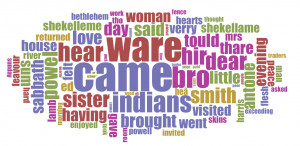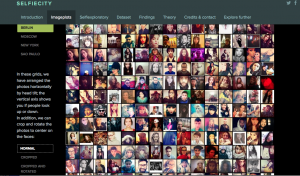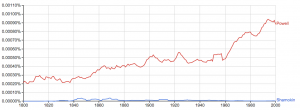The point of distant reading is to give the reader a summary of the chosen text using bigger and smaller sized words to demonstrate the frequency of those words. By looking at the words on display, the reader can get a basic idea of what the text is about and what the keys are when reading. It is important to change the Stop Words List to English (Taporware) to avoid revealing basic words that would obviously appear frequently such as “the” and “is”. When this setting has been arranged, then we can see the style of writing and the language that the author uses. When I entered the entire Powell Diary script into the Cirrus option in the Voyant Tools website, I could see the words “Indian” and “Brother” in large text and be able to predict what his work was about before even transcribing it.

As for historical perspective, Powell indeed was involved in the event because he was describing the daily life of the Shamokin Indians with emphasis on people’s names and their backgrounds and documented everything either as the day went by or at the end of the day, making sure not to leave out any important details. Powell merely observed everything and stated things factually so there was no apparent bias. The author’s experience seemed to be a positive one based on the words “friendly” and “good”, immersing himself in the culture of the Indians. I was surprised to not see the words “drunken” or “drunkard” in the Cirrus because it was a common past time in the section I read.

Based on the Whitley reading, distant reading seems to be in its beginning stages as linguists try to expand their horizons and develop it into so much more. As of now, it is just words that appear more often than others, but for instance the SelfieCity has revolutionized distant reading in that it synthesizes selfies from all over the world and categorizes them. As Whitley claims, “the goal in visualizing from a literary text is to spark inquiry”, and that should serve as a basis for more research and breakthroughs regarding this field (189). Scholars are using digital technology to “search for patterns and trace broad outlines”, and thus are on the path to change the way we read (188).
